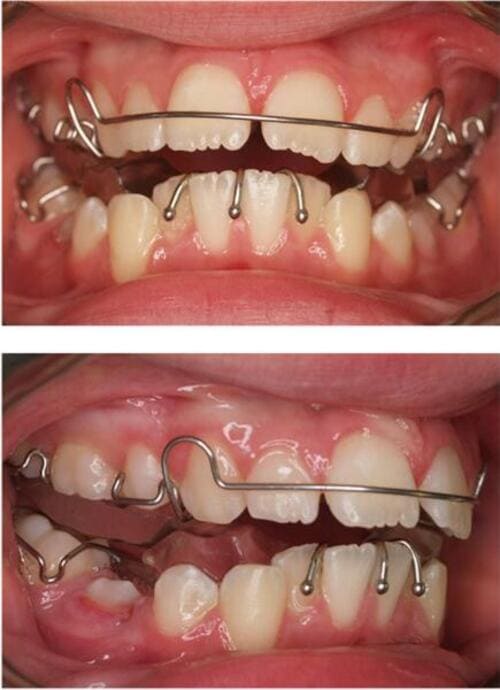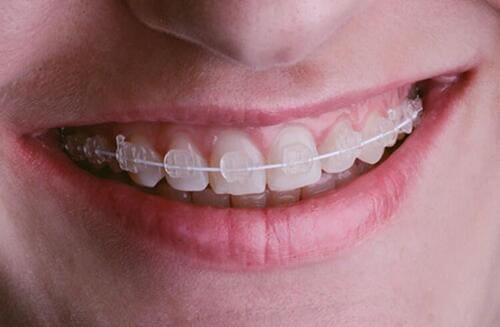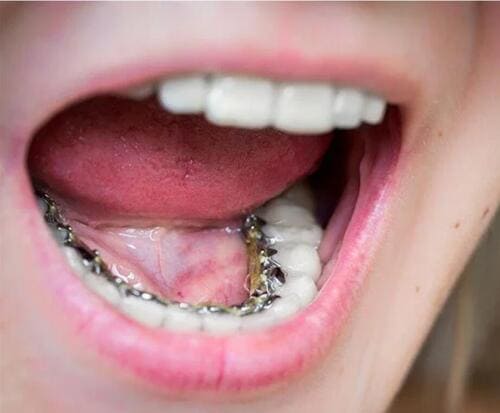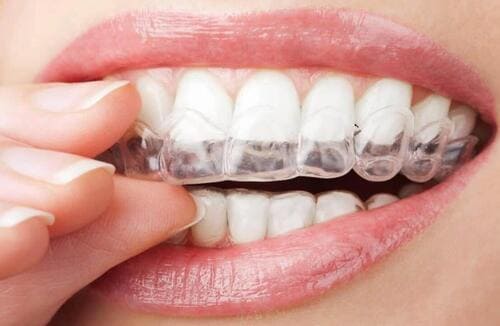As dental technology has improved and patients have become more concerned with how their teeth look, orthodontic treatment has changed from movable and fixed brackets to ceramic brackets, self-ligating brackets, lingual invisible brackets, invisible brackets without brackets, and other materials and methods. To give doctors and patients more treatment options that meet their needs for effectiveness, appearance, and comfort.
Functional Braces
The main thing about functional brackets is that the orthodontic force of the orthodontic teeth comes mostly from the strength of the muscles in the patient's stomatognathic system or from a gentle and long-lasting orthodontic force.
Functional braces are mostly removable braces, like Twin-Block, Frankel, and others. However, some functional braces are also part of fixed orthodontic brackets, like Forsus, Herbst, and others. Fixed brackets are better than removable ones because they don't depend on the patient's cooperation. This can help make sure that the treatment works to some extent.

Movable Bracket
The removable bracket has a retainer ring, a hook next to it, a base, a correction spring, and other parts. Patients can take them off and put them on on their own. At the moment, it is mostly used to break bad oral habits, fix some simple malocclusion deformities, or help with fixed corrections. Its range of uses isn't very wide, though.
Fixed bracket for braces Metal bracket Metal brackets are the orthodontic brackets that are stuck to the cheek side of the teeth with glue. The orthodontic arch wire is used to put the orthodontic brackets on the teeth to straighten the teeth. The patient can't take this bracket off on their own.
Straightwire appliances are the metal brackets that are used the most around the world. Since the most doctors use them and they are the most popular, their orthodontic functions are also perfect in every way.

The most advanced buccal bracket is the one that ties itself. Compared to the traditional non-self-ligating bracket, the self-ligating bracket can make orthodontic treatment much less painful, lengthen the time between visits, shorten the time of oral operation, and make it easier to clean your teeth and keep good oral hygiene.
The self-ligating bracket also makes it easier for teeth to move and helps them straighten and line up faster. Different brands' self-ligating designs are different, and the double-clip self-locking bracket has a unique automatic protection feature.
When the orthodontic force is too strong, it can automatically release the arch wire to prevent tooth damage and apical absorption, which is better for the health of the teeth and gums.
Self-ligating brackets can be made of either metal or ceramic. Both types have the above qualities. The color of a ceramic self-locking bracket is very close to the color of the tooth, which makes it look better than a metal self-locking bracket.

Because of their color and shine, ceramic materials look a lot like natural teeth. They also blend in better with teeth, so the treatment can be done in a quiet way.
So, adults and people who care a lot about how they look like it, and it has become one of the most important materials for orthodontic treatment. But ceramic materials aren't very strong, so they're easy to break when they're being treated or removed, which affects how well the treatment works.
Also, poor oral hygiene habits make it easy for color to stain and change the color of teeth, which was the main problem. But as a result of the birth of a new generation of microcrystalline ceramic materials, some of these are now broken.
Today's high-end ceramic bracket materials are smaller, stronger, and less likely to stain or change color. They are also easy to remove. This is done to make sure the overall strength.

Invisible Lingual Bracket
In recent years, orthodontic technology has come a long way, and lingual, invisible braces are one example.
For orthodontic treatment, the bracket is put on the back of the tooth, on the lingual side.
This way, there is no sign of braces on the front of the tooth. In the 1970s, lingual correction technology started to show up in Japan and the United States.
After years of theoretical research and technical improvements, it has become its own system and is widely used in Japan and the United States. In Europe, the U.S., Japan, and other places, the technology for lingual invisible correction is pretty advanced.
However, it is hard for doctors to use and has a lot of technical requirements.

Invisible Bracket
Invisible brackets are a set of clear brackets that can be made to fit your teeth perfectly using 3D computer technology. Unlike traditional braces, clear aligners can be taken off and worn whenever you want.Invisible braces were originally developed in the United States these years, and the most representative company is @ Invisalign.
This means they are easier to clean, more comfortable, and look better than traditional braces.
Clear aligns, on the other hand, require a lot of cooperation from the patient (more than 22 hours of daily wearing time). If they can't be worn for the right amount of time, the treatment will take longer and be much less effective.
So, when compared to fixed appliances, there is still a difference in the results of treatment and the range of treatment indications.

More information will be following,please check more on www.bestondental.com.
Contact: Tala lee
Phone: 86-15291766814
E-mail: [email protected]
Whatsapp:0086-15291766814
Add: Longhua street,shenzhen City,Guangdong,China
